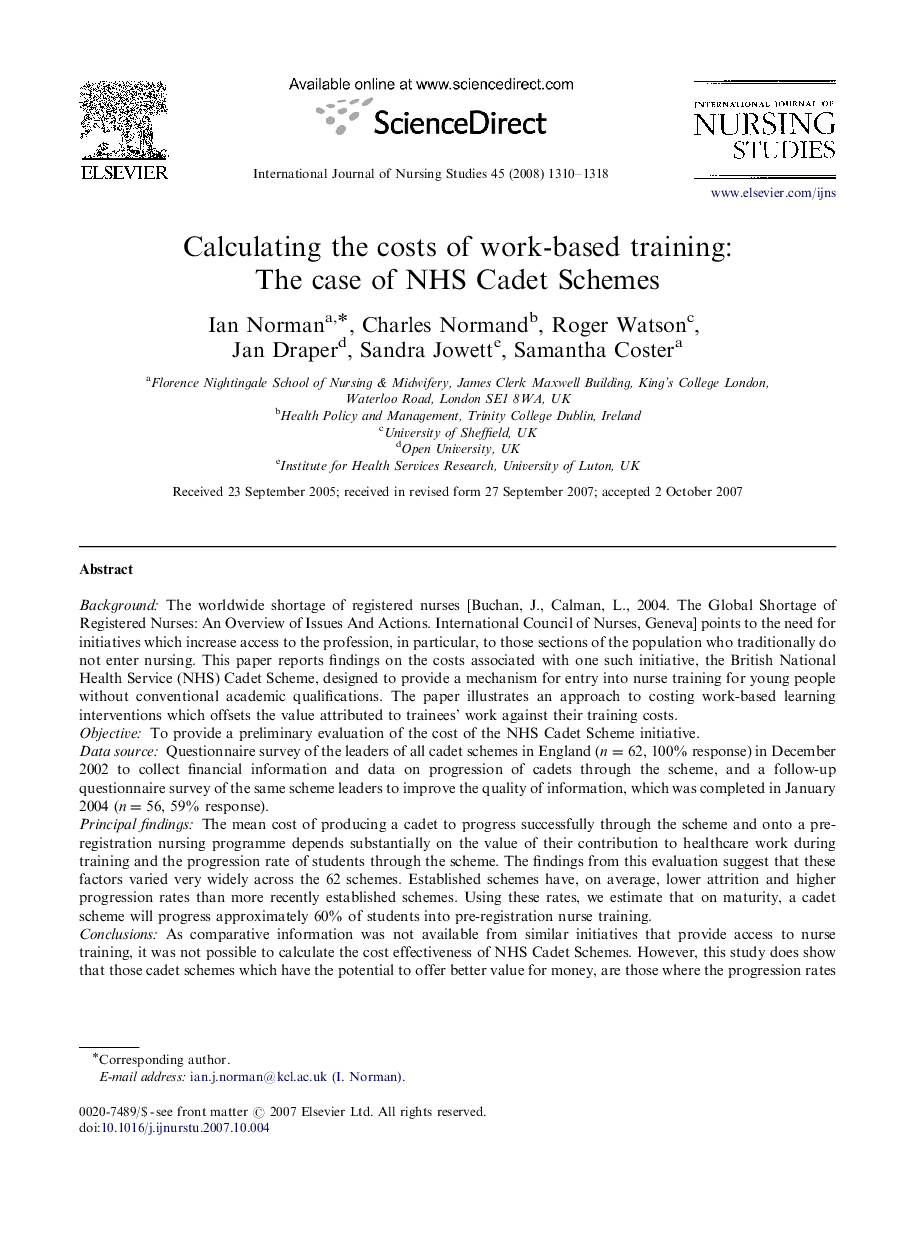| Article ID | Journal | Published Year | Pages | File Type |
|---|---|---|---|---|
| 1077255 | International Journal of Nursing Studies | 2008 | 9 Pages |
BackgroundThe worldwide shortage of registered nurses [Buchan, J., Calman, L., 2004. The Global Shortage of Registered Nurses: An Overview of Issues And Actions. International Council of Nurses, Geneva] points to the need for initiatives which increase access to the profession, in particular, to those sections of the population who traditionally do not enter nursing. This paper reports findings on the costs associated with one such initiative, the British National Health Service (NHS) Cadet Scheme, designed to provide a mechanism for entry into nurse training for young people without conventional academic qualifications. The paper illustrates an approach to costing work-based learning interventions which offsets the value attributed to trainees’ work against their training costs.ObjectiveTo provide a preliminary evaluation of the cost of the NHS Cadet Scheme initiative.Data sourceQuestionnaire survey of the leaders of all cadet schemes in England (n=62, 100% response) in December 2002 to collect financial information and data on progression of cadets through the scheme, and a follow-up questionnaire survey of the same scheme leaders to improve the quality of information, which was completed in January 2004 (n=56, 59% response).Principal findingsThe mean cost of producing a cadet to progress successfully through the scheme and onto a pre-registration nursing programme depends substantially on the value of their contribution to healthcare work during training and the progression rate of students through the scheme. The findings from this evaluation suggest that these factors varied very widely across the 62 schemes. Established schemes have, on average, lower attrition and higher progression rates than more recently established schemes. Using these rates, we estimate that on maturity, a cadet scheme will progress approximately 60% of students into pre-registration nurse training.ConclusionsAs comparative information was not available from similar initiatives that provide access to nurse training, it was not possible to calculate the cost effectiveness of NHS Cadet Schemes. However, this study does show that those cadet schemes which have the potential to offer better value for money, are those where the progression rates are good and where the practical training of cadets is organised such that cadets meet the needs of patients which might otherwise have to be met by non-professionally qualified staff.
